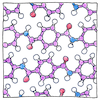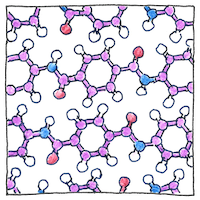Stephanie Kwolek
materials science

|
Kevlar
Stephanie Kwolek, working with poly-p-phenylene-terephthalate and polybenzamide, identified a cloudy opalescent low-viscosity solution that, when put through the spinneret, produced fibers that were stronger than nylon.
Aramids
Development of Kevlar was made possible as Stephanie Kwolek benefitted from knowledge and technology for processing rayon, polyester, and nylon. Other meta-aramid and para-aramid fibers, such as Nomex, Teijinconex, Twaron, X-Fiper, and Kermel, are produced by several companies.
Sky-hooks
One end of a space elevator or sky-hook sits in outer space between Earth and the moon. For it to be feasible we need a synthetic fiber only five times as strong as Kevlar, although alternatives to a synchronous sky-hook are envisioned, such as a rolling sky-hook that climbs and descends at six points in its orbit, or a partial rolling sky-hook that a rocket from Earth could meet. For a sky-hook on Earth, we might be able to use a fiber spun from carbon or boron nitride nanotubes; however, for a sky-hook on Mars or the moon, Kevlar would be just fine.



There are many applications for Kevlar, including cryogenic suspension structures, personal and military armor, safety gloves, sleeves, and jackets, motorcycle safety clothing, safety gear for other sports, shoes and laces for sports, inner lining for bicycle tires, table tennis paddles and rackets for tennis, badminton, and squash, racing boat sails, loudspeaker cones, archery bow strings and bows for string instruments, drumheads, woodwind reeds, fire dancing wicks, non-stick frying pans, ropes and cables, protective sheath for optical fiber cables, electricity-producing clothing (potentially), brake pads, reinforced rubber expansion joints and hoses, smartphone cases, wind and water turbine blades, helicopter rotor blades, bodies for racing cars and kayaks, cricket bats, sticks for hockey and lacrosse, and, potentially, lunar and martian sky-hooks.
See also in The book of science:
Readings in wikipedia:
Other readings: